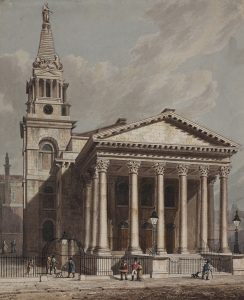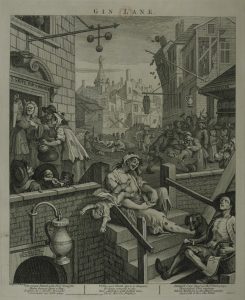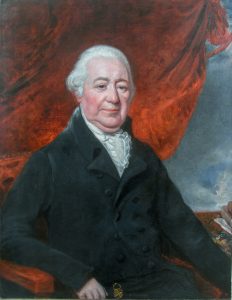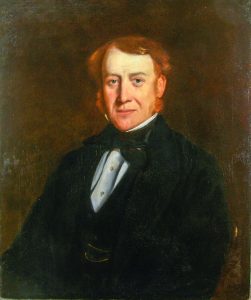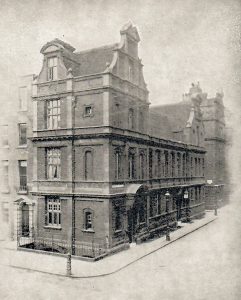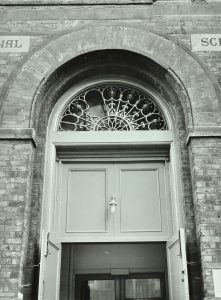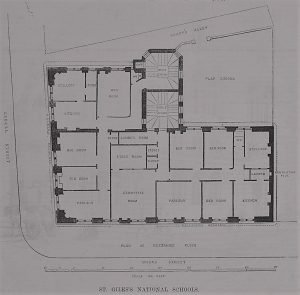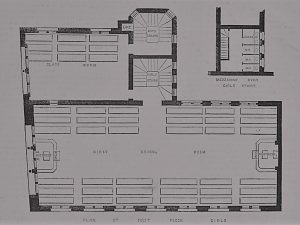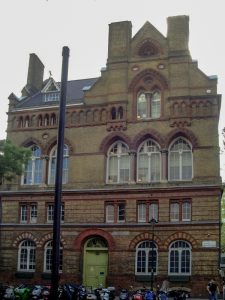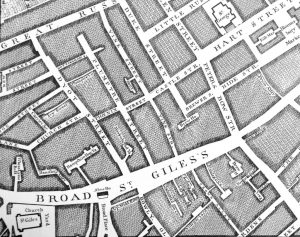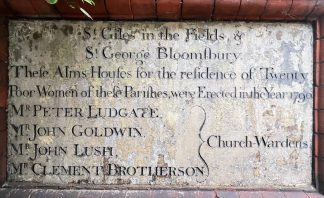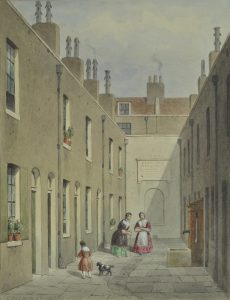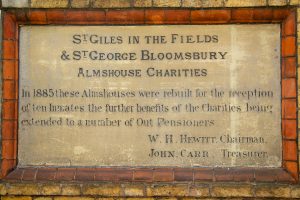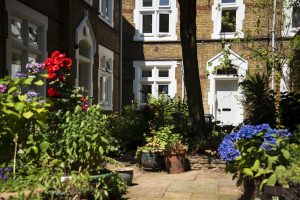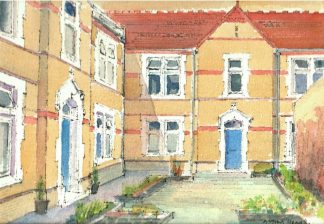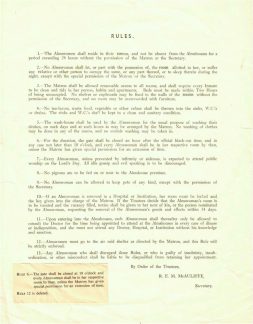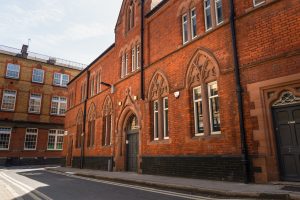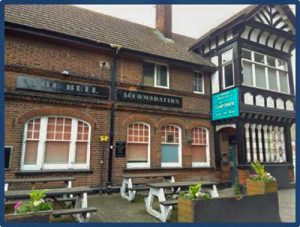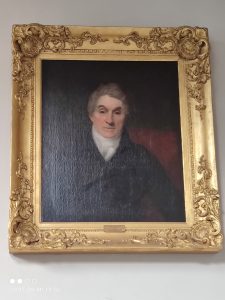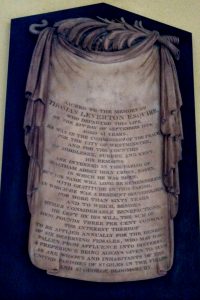Who we are
Our charities provide relief from hardship through alms and education grants. We continue to be inspired by the philanthropic motivations of the charities’ historic founders and yet we have a modern approach to grant-making. We are small, local, independent funders who really know our area.
Our Values
In terms of alms, we aim for:
Compassion
Guided by generosity of spirit, we aspire to act with care and kindness, being attentive to the needs of those who seek our help
Connection
We aim to be known and available for those in need in our local community, understanding of their needs and working alongside other organisations to delivery assistance
Continuity
Our longevity and independence allow us to take a thoughtful approach to almsgiving in today’s society – we aim to use our resources sustainably, thinking about future generations
In terms of education, we aim to be:
Collaborative
- We encourage partnerships between voluntary organisations, churches, and schools
- We are keen to build relationships with other funders – to share information and reduce the fundraising burden where possible
- We want to develop strong trust-based relationships with the key voluntary organisations based in the area
Responsive
- We seek to identify funding gaps and respond positively where we can
- We encourage organisations to share information about local issues with us
- We encourage feedback about our grants programme and application process
- We try to be flexible in responding to the needs of all our grant recipients
Inclusive
- We will support initiatives that include ALL children and young people in trying out new opportunities and/or building their aspirations
- We also recognise that being inclusive sometimes means focusing on those who are at risk of being left behind educationally (so they can take advantage of the same opportunities available to others)
Our Trustees
Each charity is governed by a board consisting of eight trustees*. Both charities have four ex-officio trustees, being the Rector and one churchwarden from St Giles-in-the-Fields and St George’s, Bloomsbury churches.
The remaining four trustees are co-opted by the other trustees. They are appointed for a three-year term and this can be renewed.
Education Charity
- Revd Tom Sander – Rector, St Giles-in-the-Fields (Chair)
- Revd David Peebles – Rector, St George’s, Bloomsbury
- Oliver Flory – Churchwarden, St Giles-in-the-Fields
- Helena Roden – Churchwarden, St George’s, Bloomsbury
- Hugo Robinson
- Revd John Pearson-Hicks
- Nicola Wilson
- Jenna Hannon
Alms Charity
- Revd Tom Sander – Rector, St Giles-in-the-Fields (Chair)
- Revd David Peebles – Rector, St George’s, Bloomsbury
- Julian Sharpe – Churchwarden, St George’s, Bloomsbury
- Catherine Campbell – Churchwarden, St Giles-in-the-Fields
- Jeremy Eveleigh
- Philippa Tuckman
- Fatima Asif
- Abul Choudhury
Annual Accounts
Click the links below to see our latest accounts.
Annual Accounts 2022 – William Shelton (Education)
Annual Accounts 2022 – Bloomsbury United (Alms)
History
Our Charities have a long history of providing support and relief to the poor in the parishes of St Giles and St George’s, Bloomsbury. Our roots date back to the seventeenth and eighteenth centuries, a time when the population of the historic parish of St Giles-in-the-Fields grew enormously and the "rookeries" between St Giles church, Great Russell Street and Seven Dials, were among the most notorious in London for poverty and squalour. During this time, William Hogarth’s famous engraving ‘Gin Lane’ used St Giles as a setting to satirise and condemn the living conditions of London’s poor.
St Giles-in-the-Fields and Bloomsbury United Charity
The St Giles-in-the-Fields and Bloomsbury United Charity was formed in 2005 and consolidates four former charities:
- Almshouse and Pension Charities
- The Bloomsbury Dispensary for the Relief of the Sick and Poor
- The Leverton Charity
- Dibdin Brand Charity
In 1656, the Earl of Southampton granted land in Broad Street (the present St Giles High Street), at the north end of Monmouth Street, for a term of five hundred years, to build five almshouses for aged widows. The parish of St Giles paid for the building of the almshouses. The almswomen in the 1730s received an allowance of £2/8s a year, and twelve bushels of coal, and at Christmas and Whitsuntide 20 shillings each from Lady Dudley’s gift.
The almshouses stood on that site until 1782, when they were pulled down to widen the street, and the Vestry of St Giles purchased a piece of land to build new almshouses on the north side of Lewknor’s Lane [now Macklin Street] for £500 to house twenty almswomen. The site was described as ‘a spot both close and unhealthy, surrounded with buildings of the lowest description’.
Those almshouses were demolished in 1885, and rebuilt on the same site to which further land was added, to provide accommodation in bedsitting rooms for ten almswomen, and a flat for a matron, and a boardroom for the trustees. The almshouses were modernised in 1954, when kitchens were added to each bedsitting room, and shared bathrooms were provided. In 2003-4 the almshouses were again remodelled, to provide eight two-roomed flats, each with their own kitchen and bathroom.
The Almshouses and Pensions Charity by an Order of the Charity Commissioners in 1870 were endowed with:
- The Bell Inn at Rainham in Essex, bequeathed by Wriothesley Danvers for the benefit of poor people in the parish of St Giles, and which for many years had been used for the benefit of the poor women in the Almshouses.
- Houses in Princes Street, Drury Lane, given by Richard Holford in 1659 for the benefit of poor people in St Giles’, which for many years had been used for the benefit of the Almshouses
- Bailey’s rent-charge, Turnstile, Holborn, bequeathed by Anthony Bailey in 1640 Houses in Elbow Lane in St Michael Paternoster Royal in the City of London bequeathed by Alicia Duchess Dudley in 1668
- Gift of William and Henry Shakespeare £1,500 in 3% Consols in 1799 Gift of Mrs Martha Gregory £666/13s/4d in 3% Consols in 1809 Surplus of a soup subscription in 1800-1801
- Subscription of the inhabitants in 1815 £2,850
- Produce of a William Wooden’s gift, in 1681 being an investment in lieu of a rent charge on the Hampshire Hog £100
- Legacy from Thomas Leverton in 1824 of £100
- Miss Washington Cornelius Winter Ashfield bequeathed £2,000 Consols in 1838 to make monthly payments to the poor widows in the Almshouses.
In 1814, it was discovered that no accounts or minutes had been kept of the charity, and when it was realised that the income was insufficient to maintain the almshouses, and pay pensions to the residents, and to twenty out-pensioners, an appeal was launched among the inhabitants of the parishes. In 1827, the Charity Commissioners then discovered that again no accounts had been kept by the churchwardens and select vestry, who administered the charity, since 1815.
This was founded in 1801 by Dr George Pinckard, who also founded the Medical Clerical and General Life Assurance Society, in Great Russell Street. It was funded by subscriptions sought from better-off residents. The Dispensary provided medical treatment for the poor of Bloomsbury, and St Giles, which was one of the poorest districts of London.
During its first ten years, 10,014 people were treated. It was staffed originally by an honorary physician, Dr Pinckard, and an honorary surgeon, William Blair, and ‘home visitors’. Edward Jenner, who pioneered vaccination, was appointed Superintendent of Vaccination at the Dispensary. In 1810, an apothecary was appointed, to be replaced by a Resident Medical Officer in 1859. In 1879, George Stone, who had been secretary to the Dispensary, and was solicitor to the Medical Clerical and General Life Assurance Society left £62,000 to be divided between St George’s Hospital, St Mary’s Hospital Paddington, the Brompton Hospital, and the Bloomsbury Dispensary.
In 1880, the trustees built a new Dispensary in Bloomsbury Street. The Dispensary continued to provide medical care for the poor of Bloomsbury until the establishment of the National Health Service in 1948, after which it made grants to the sick of the neighbourhood, and for nursing care. The premises of the Dispensary were destroyed by bomb damage in November 1940 and May 1941.
Portraits of Dr Pinckard, William Blair, and Stephen Hough, Treasurer of the Dispensary, were painted by and presented to the Dispensary by Henry Meyer, in 1823, and a portrait of George Stone by an unknown artist was presented after his death. All these portraits now hang in the St Giles-in-the-Fields Vestry House.
This was founded by Thomas Leverton, a distinguished architect, who designed the houses on the south side of Bedford Square, and the Resurrection Gate at St Giles-in-the-Fields Church.
When he died in 1824, he left a reversion at the death of Mrs Leverton of £5,000 3% consols to trustees ‘the interest thereof to be applied annually for the benefit of six deserving females who may have fallen from affluence into distress, a preference always being given to such as are widows, and inhabitants of the united parishes of St Giles-in-the-Fields and St George’s Bloomsbury’.
A portrait of Thomas Leverton, which his widow bequeathed to his trustees, hangs on the staircase of the south lobby of St Giles-in-the Fields Church. His memorial may be seen on the north wall of the north gallery of St Giles.
This was founded by Eli Josiah Brand in 1904, in memory of the late Revd Robert William Dibdin of West Street Chapel, Seven Dials, and settled on between three and six trustees, of whom the Mayor of Holborn should ex officio be one.
The endowment consisted of 50 freehold properties in Rodwell Road, East Dulwich, subject to 99-year leases from 1879, at ground rents totalling £200 a year. The income was to be applied:
- to an annuity for life of £50 to Miss Emily Dibdin, the daughter of Mr Dibdin, in the expectation that she would play an active part in dispensing the pensions to the poor provided for in the Charity;
- to two guineas to be paid to a clergyman of the church of England or other Protestant Christian minister for preaching a sermon in some church or chapel once a year against ‘Betting, Gambling, and inordinate love of pleasure’;
- in expending not more than £15/12s each Christmas on blankets, coals and other necessaries for the ‘outside poor’ not otherwise participating in this charity, and to provide a Christmas repast for about twenty five men and twenty five women of the poorest class during the Christmas or New Year season, and that £2/10s should be distributed by the Mayor of Holborn, or the Trustees in terms of two shillings and sixpence each to twenty old decrepit men and women, in memory of the late Revd Robert William Brand;
- the residue of the rents and profits to making weekly payments of between two shillings and sixpence and five shillings each to members of the indigent classes for the time being resident in the Borough of Holborn.
The trustees were also charged, under the will of Mr Brand, who died in 1914, with the maintenance of his family tomb in Kensal Green Cemetery.
St Giles-in-the-Fields and William Shelton Educational Charity
This Charity was formed under a Scheme granted by the Charity Commission in 2005 and consolidated two former charities:
- William Shelton’s Educational Foundation
- St Giles-in-the-Fields and Bloomsbury Educational Foundation
In 1661, William Shelton purchased a piece of land with buildings on it for £458/10s on Parker’s Lane, and in 1672, bequeathed it to trustees, directing them:
‘to pay from the rents and profits for twenty gowns for twenty poor old men and women of St Giles, £15; the like for ten gowns for St Martin’s, £7/10s; the like for five gowns for Covent Garden, £3/5s; to provide an able and fit schoolmaster to teach and instruct in learning, in the school and room he had appropriated for that purpose in Parker’s Lane, fifty children of the poorest sort, thirty-five whereof be of St Giles, ten of St Martin’s and five of Covent Garden, and to pay him per annum £20; to provide him a gown yearly of the value of £1; to provide a coat yearly for each of the scholars at 6s each, £15 (the aforesaid gowns and coats all to be of a green colour); to lay in two chaldron of coals in the summer yearly, for a fire for the scholars in the winter to pay his heir at law £10 per annum; and the remainder or surplusage to be applied in binding out some of the scholars apprentice.’
He provided that during his life, his widow should receive the rents and appoint the school master and scholars, and purchase the gowns and coats. When she died, in 1681, the trust devolved to the rector and churchwardens of St Giles.
When in 1763 the schoolmaster died, the rents were inadequate to fulfil the trust, and the school was discontinued. The rector and churchwardens agreed to invest the rental income in 3% consols to accumulate enough money to recommence the school.
In 1815, the capital had accumulated sufficiently that with the rents, £250 annual income was available, and the vestry leased premises in Lloyds Court for 61 years for:
£40 a year, to build a school, on a piece of ground adjoining St Giles’ Churchyard, at the cost of £1,163/10s/1d to be conducted under regulations ‘agreeable to the tenets of the Church of England, and conformable to the wishes of the testator’. Instead of a coat, scholars were to be provided with a suit of clothes, ‘similar to those provided for scholars of Christ’s Hospital’, comprising coat, breeches, cap girdle, shoes, stockings and shirt.
In 1828, Shelton’s school was joined with St Giles-in-the-Fields National School, (established in 1825), the trustees of Shelton’s Charity paying for fifty boys, ‘of the poorest class’ from the children of the residents of the parishes of St Giles and St George’s. Each boy was provided with a light green coat, a pair of leather breeches, a pair of stockings, a pair of shoes, and a girdle.
The School was rebuilt as St Giles National Schools, on the corner of Endell Street in 1860, and the trustees paid an annual grant to the Schools until they closed in 1963.
This charity has its origins in the St Giles Charity School, founded in 1705, funded by voluntary subscriptions, and subsequently endowed with a house in Parker Lane, and the school building, built in Museum Street in 1795. The master and mistress of the School were to be members of the Church of England and the children were to be instructed in the principles of the Church of England. The school provided education for forty girls and eighty boys, and the trustees provided a premium for the apprenticeship of girls and boys, and oversaw the apprenticeship. The school moved from Museum Street to a new building in Little Russell Street, in 1880.
In 1713, Mrs Elizabeth Saywell bequeathed three parts of her estates in St Giles parish to Dr Benjamin Carter in trust, and a fourth part to the minister of St Giles to apply the rents and profits towards the education and maintenance of the poor charity girls in the parish of St Giles, for ever. In 1727, Dr Carter granted to trustees all the lands bequeathed by Mrs Saywell (whose maiden name was Lloyd) situated in Lloyd’s Court, St Giles, to pay £35 a year to teach poor children of Wilford in Nottinghamshire, and to pay £10 a year to the trustees of St Giles’ Charity Schools for the education of poor girls of St Giles. This payment continued until at least 1898. In 1909, Dr Carter’s Trustees divided their endowment and established Carter’s Bloomsbury Educational Foundation to which they transferred part of the property bequeathed by Mrs Saywell, 12 Flitcroft Street (formerly Little Denmark Street).
In 1923, the St Giles’ Charity School Trust and Carter’s Bloomsbury Educational foundation were brought together by a Charity Commissioners’ Scheme, and the trustees were authorised to apply a yearly sum of not more than £200 a year for the maintenance of the premises of any elementary school in the ancient parishes of St Giles-in-the-Fields and St George’s Bloomsbury in which religious education is given in accordance with the principles of the Church of England, and/or to provide religious instruction in accordance with the principles of the Church of England by means of a Sunday school for the benefit of boys and girls resident in the ancient parish. The residue of the income was to be applied for the benefit of boys and girls being members of the Church of England resident in the ancient parish, provided that two-fifths shall be applied for the benefit of boys and three-fifths for the benefit of girls.
A further scheme in 1974, in addition, permitted the trustees to provide financial assistance to any charitable organisation in the ancient parishes, the objects of which were to advance the education of, or improve the conditions of life of, needy children and young people by developing their physical, mental and moral capacities through their leisure-time activities.



